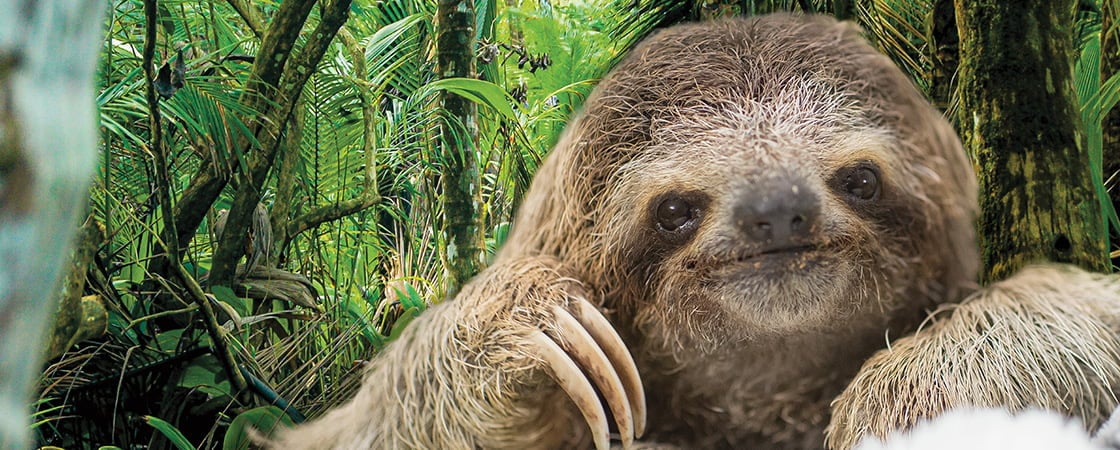Snow White lay motionless on the rainforest floor. The tiny sloth was dangerously cold, her breath weak. Alone and unconscious, she hovered near death.
Only months before, Snow White had been a thriving baby, her limbs wrapped tightly around her mother’s hairy waist as the pair made their way through the treetops of Manuel Antonio, in Costa Rica. Two types of sloths live here—two-fingered sloths and three-fingered sloths like Snow White—along with many thousands of other creatures.
As Snow White and her mother snuggled high in the leafy canopy, gold-colored squirrel monkeys leapt from tree to tree. Toucans with bright-yellow and orange beaks perched in the branches. Long-snouted anteaters snuffled through the dirt below, feasting on ants and termites, while spiny-backed iguanas the size of small dogs marched through the brush.
When Snow White was about 6 months old, she began to live on her own. As a weanling—a sloth that has just separated from its mother—she was still too young to travel far in search of food, so she spent her days in a small area, eating the leaves and fruit of just a few trees that her mother had taught her were safe.
Then disaster struck.
Snow White made her home near a hotel, and trees were being cleared in the area to keep up the property. At some point, a tree she depended on for food was likely cut down. Snow White began to starve.
As she grew increasingly malnourished, she developed a severe infection. Then a fierce rainstorm lashed the forest, chilling her to the bone. At some point, too weak to hang on, she likely fell from a tree.
Snow White, it seemed, was doomed.
Snow White lay on the rainforest floor. She did not move. The tiny sloth was dangerously cold. Her breath was weak. Alone and unconscious, she was near death.
Only months before, Snow White had been a thriving baby. She had wrapped her arms and legs tightly around her mother’s hairy waist as the pair made their way through the treetops of Manuel Antonio, in Costa Rica. Two types of sloths live here—two-fingered sloths and three-fingered sloths like Snow White. Many other creatures also live in this jungle.
As Snow White and her mother snuggled high in the leafy canopy, gold-colored squirrel monkeys leapt from tree to tree. Toucans with bright-yellow and orange beaks perched in the branches. Long-snouted anteaters sniffed through the dirt below, feasting on ants and termites. Spiny-backed iguanas the size of small dogs marched through the brush.
When Snow White was about 6 months old, she began to live on her own. She was still a weanling. That’s a sloth that has just separated from its mother and is still too young to travel far for food. So Snow White spent her days in a small area. She ate the leaves and fruit of a few trees that her mother had taught her were safe.
Then disaster struck.
Snow White made her home near a hotel. Trees were being cleared to make the area look better. At some point, a tree she depended on for food was likely cut down. Snow White began to starve.
She grew malnourished and developed a severe infection. Then a fierce rainstorm chilled her to the bone. At some point, she fell from her tree—likely too weak to hang on.
Snow White, it seemed, was doomed.

